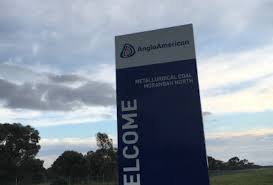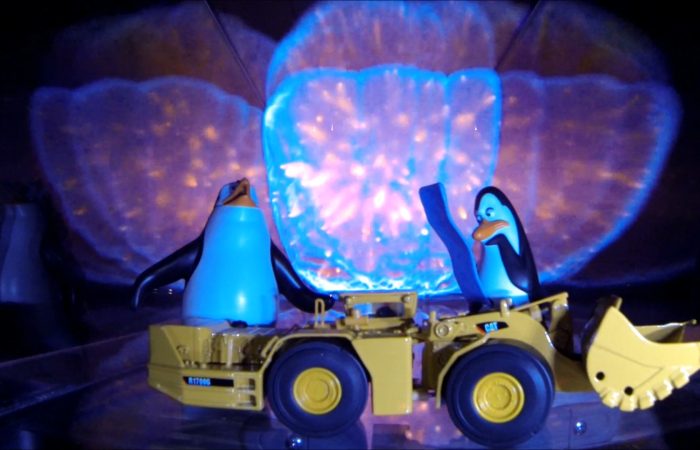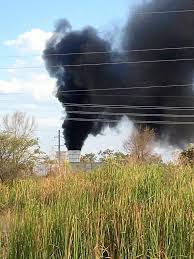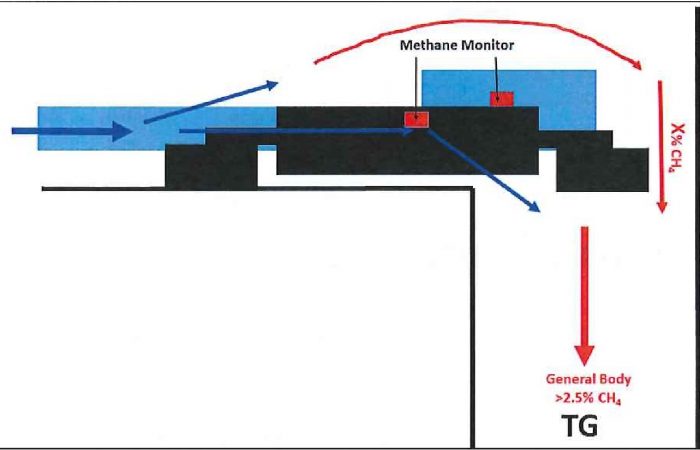
The risk assessment does not mention the risk of an ignition of Methane as a potential hazard. This has to be a major hazard when considering Methane levels of in the TG, as the primary source of the methane is the Longwall goaf gas, which inevitably will flow in the vicinity of the chain pillar rib line. Les Marlborough Mines Inspector 13th October 2017
Inspector Marlborough next MRE about the Grosvenor Procedures for GRO-750-TARP-General Body Contaminant is dated the 13th of October 2017
I found this sentence of the MRE about how the Grosvenor Mines data does not show that the Shearer being in the Tailgate Shuffle Zone increasing the methane levels in the Tailgate Roadway
The data supplied by the mine in response to the MRE does not demonstrate that the shearer standing in the TG shuffle zone increases the methane being swept out into the TG-
This statement stands at odds with a lot of the testimony at the Grosvenor Inquiry.
More concerning to me was the reference to
power will instantaneously be tripped to the shearer when the TG GB Methane at the Methane Monitor located 400m outbye of the face reaches, or exceeds 2.5%.
He also notes that the TARP then states that the shearer may be moved clear of the TG shuffle zone with the authorisation of the Underground Mine Manager.
I know it has been a long time since I was Underground.
But if the methane monitor was still reading over 2.5%, how can the shearer on the face be powered and moved without over-riding the methane monitor interlocks?
Inspector Marlborough also requests more Citec Screen shots for 12 hour periods (i.e. 12:00 am to 12:00 PM and 12:00 PM to 12:00 AM for each day) that show Shearer Face Position, Barometer, Inbye 101 TG Methane monitor readings and Outbye TG Monitor readings, for 12 days between the 6th of March and the 6th September 2017.
MRE – Grosvenor Coal Mine LM methane – 13.10.2017 (002).pdf
Inspector Marlborough does not seem very satisfied with the S 168 Directive Response from the SSE on the due date of 3rd October.
On the 13th he makes a number of comments about the supplied Risk Assessment.
To demonstrate, he then includes a diagram and written explanation of the shearer at the tailgate, the location of methane detectors, likely methane concentrations and location.
Inspector Marlborough then states “the most recent ignition event on a Longwall in Queensland occurred at the TG end of the AFC and the ignition source was believed to be from the TG AFC Sprocket area. The shearer was positioned in the TG at the time of the ignition.
The AFC was running, the shearer was powered, but the cutter drums were not engaged at the time of the ignition.”
Inspector Marlborough then raises that The TARP and the explanatory letter provided by the mine, stipulate that power will instantaneously be tripped to the shearer when the TG GB Methane at the Methane Monitor located 400m outbye of the face reaches, or exceeds 2.5%.
He also notes that the TARP then states that the shearer may be moved clear of the TG shuffle zone with the authorisation of the Underground Mine Manager.
It goes on to explain that deteriorated roof conditions or moving the shearer to reduce Impact on goaf gas fringe may be reasons for wanting to move the shearer.
The data supplied by the mine in response to the MRE does not demonstrate that the shearer standing in the TG shuffle zone increases the methane being swept out into the TG-
The letter from the Chief Inspector of Coal Mines sent to all Coal Underground SSE’s and Underground Mine Managers on 30 Jan 2017 clearly states that if a roadway in a mine contains an atmosphere equal to or greater than 2.5% methane it is dangerous under section 273 of the Act.
Inspector Marlborough then extends the date of the Directive till the 27th of October
For the above reasons it is not considered an acceptable level of risk to move the shearer whenever the methane level in the TG general body is at or greater than 2.5% and so the requirements of the Directive are not satisfied.
I will extend the Directive completion date to Friday 27 October 2017 in order to allow the mine to respond to this MRE.
MRE – Grosvenor Coal Mine LM methane – 13.10.2017 (002).pdf
I, Mr Leslie Marlborough, Inspector of Mines, issued a Directive to the mine on 17/09/2017 for the mine to review the GRO-750-TARP-General Body Contaminant and the controls in place to ensure that the above points are addressed, with supporting data from the mine’s gas monitoring system to ensure that an acceptable level of risk is achieved.
The SSE responded to this Directive on Tuesday 3 October 2017. The following are my comments regarding the response by SSE.
The context and scope of the risk assessment is stated to identify energy hazards, potential unwanted events and control measures to reduce the risk exposure associated with Longwall TG Return Methane Levels (including the shearer movements entering and leaving the TG).
The risk assessment does not mention the risk of an ignition of Methane as a potential hazard.
This has to be a major hazard when considering Methane levels of in the TG, as the primary source of the methane is the Longwall goaf gas, which inevitably will flow in the vicinity of the chain pillar rib line.
The sketch below shows a typical layout when the LW Shearer is in the TG end of the Longwall.
The Methane monitor on the TG Drive, is typically positioned above the TG AFC motor and is 3-5 m from the end of the AFC. The shearer Methane monitor is typically situated in the middle of the shearer on the goaf side of the shearer.
As can be seen from the sketch, when there is a situation with greater than 2.5% Methane in the TG general body, the Methane reading on the TG AFC and Shearer monitors are typically 0.5% or less.
This means that the bulk of the Methane reporting to the Tailgate Roadway is being swept out from the goaf fringe by the air stream that is deflected round the shearer as it travels into the TG end.
It will be highly likely that this Methane rich air stream will be in excess of 5% Methane and will flow over the TG shearer drum, which normally has to cut approximately 1.5 m beyond the end of the TG AFC Drive to trim the floor to allow the drive to be advanced.
Typical LW TG Arrangement Sketch
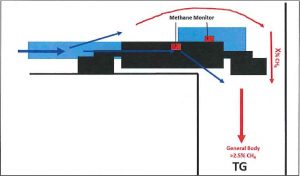
The most recent ignition event on a Longwall in Queensland occurred at the TG end of the AFC and the ignition source was believed to be from the TG AFC Sprocket area. The shearer was positioned in the TG at the time of the ignition.
The AFC was running, the shearer was powered, but the cutter drums were not engaged at the time of the ignition.
The TARP and the explanatory letter provided by the mine, stipulate that power will instantaneously be tripped to the shearer when the TG GB Methane at the Methane Monitor located 400m outbye of the face reaches, or exceeds 2.5%.
The TARP then states that the shearer may be moved clear of the TG shuffle zone with the authorisation of the Underground Mine Manager.
It goes on to explain that deteriorated roof conditions or moving the shearer to reduce Impact on goaf gas fringe may be reasons for wanting to move the shearer. The data supplied by the mine in response to the MRE does not demonstrate that the shearer standing in the TG shuffle zone increases the methane being swept out into the TG-
The letter from the Chief Inspector of Coal Mines sent to all Coal Underground SSE’s and Underground Mine Managers on 30 Jan 2017 clearly states that if a roadway in a mine contains an atmosphere equal to or greater than 2.5% methane it is dangerous under section 273 of the Act.
The letter also goes on to state that the SHMS must have controls to prevent a general body concentration of methane occurring in any roadway that is equal to or greater than 2.5%.
For the above reasons it is not considered an acceptable level of risk to move the shearer whenever the methane level in the TG general body is at or greater than 2.5% and so the requirements of the Directive are not satisfied.
I will extend the Directive completion date to Friday 27 October 2017 in order to allow the mine to respond to this MRE.
In addition, I request that you provide the following information, electronically, for myself or another Inspector; or Officer, to collect from the mine on Friday 20 October 2017;-
Gas data from your Safegas system in the form of the log. SPW files, of the inbye and outbye LWIOI TG methane monitors with time scale for the following period; March 01 2017 to Sep 15 2017.
In addition, can you provide Citec Screen shots for 12 hour periods (i.e. 12:00 am to 12:00 PM and 12:00 PM to 12:00 AM for each day) that show Shearer Face Position, Barometer, Inbye 101 TG Methane monitor readings and Outbye TG Monitor readings, for the following dates;
- 6th March 2017
- 6th July 2017
- 7th July 2017
- 8th July 2017
- 10th July 2017
- 11th July 2017
- 13 July 2017
- 6 Aug 2017
- 10 Aug 2017
- 11 Aug 2017
- 14 Aug 2017
- 6 Sep 2017
Whether it is myself or another officer who comes to site to collect the information requested we will bring an appropriate external hard drive to collect the data requested above.
